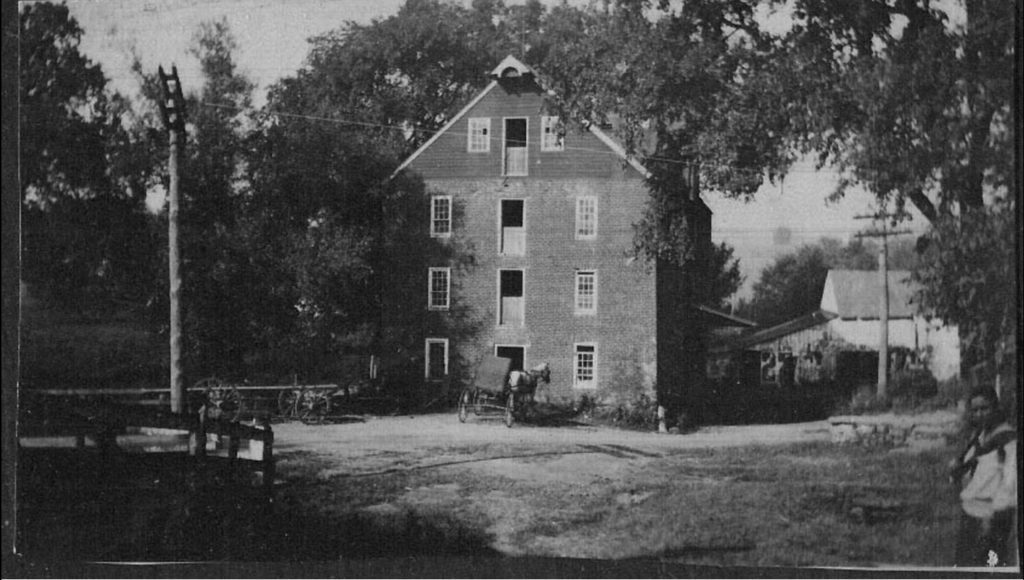
Rapid Growth
Sometime in the 1790s the growing village was renamed “Waterford”
Amos Janney died in 1747, leaving his estate to his sixteen-year-old son Mahlon. Within a few years young Mahlon replaced the original log mill with a new two-story structure of wood and stone. This second mill was erected on the site of the present brick mill. The county began to build and improve local roads to facilitate the movement of goods to and from Janney’s Mill and, by the time Francis Hague died in 1780, the tiny village had begun to grow rapidly. Amos’s cousin Joseph Janney bought 12 acres from Hague’s estate and promptly laid out 15 lots on the south side of Main Street from the mill almost to the site of the present post office. Shops and dwellings soon followed, and sometime in the 1790s the growing village was renamed “Waterford.”
In 1800 Mahlon Janney extended Main Street up the “Big Hill” by subdividing his property there into an additional 17 lots. And when Mahlon died in 1812, his executors divided his land between Second and High Streets into 64 more parcels.Through the end of the 18th century, Waterford and its fertile hinterland continued to attract Quakers from Pennsylvania. And, increasingly, the Quakers were followed by Scotch-Irish Presbyterians and German Lutherans, also from Pennsylvania. Baptists and Methodists came too, adding to the lively social and ethnic mix. Besides their heritage and religious beliefs, these people brought their crafts and skills with them. Waterford became a bustling commercial town, supporting and serving a prosperous quarter of rural Loudoun County. By 1762 the ethnic mix included African-Americans, some of them slaves, but others, especially after the turn of the century, free blacks—a relative rarity elsewhere in Virginia. By 1830, African Americans headed a fourth of Waterford’s free households; many of them owned their own homes.
Most of Waterford’s houses were built in the first quarter of the 19th century, when the town grew rapidly as a commercial center. Many of the structures that survive today as dwellings began as shops or stores. The architecture from this “Federal period” dominates the town, but examples from other periods appear here as well.